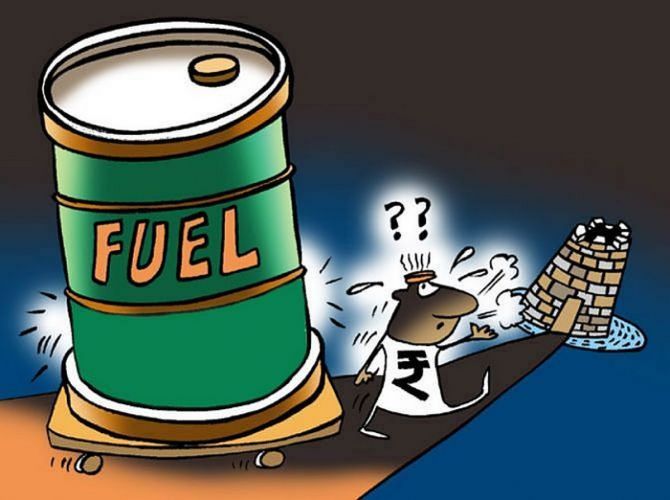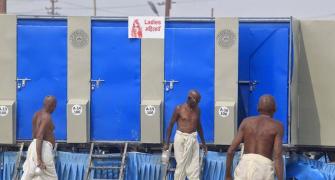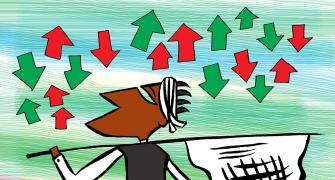A swift recovery in oil demand in India is not only helping the stability of the global market, it is giving huge fiscal headroom to the government in terms of additional excise duty.

The oil and gas sector this year faced unprecedented headwinds, with West Texas Intermediate (WTI) crude oil prices entering negative territory for the first time in history.
This was driven by a global demand slowdown, induced by Covid-19 lockdowns in April.
WTI is used as a benchmark for crude oil sale in North America.
It fell to minus $40 a barrel in April.
This means producers were paying those with adequate space to keep crude oil.
While Brent, the more popular global benchmark, and the Indian basket of crude oil did not reach those lows, there was significant pressure on refined products.
The fall in crude oil prices on April 21 was followed by a sharp recovery back into positive territory the very next day.
WTI traded just over $10 a barrel on April 22, a day after the crash, and then slowly crossed $40 on June 22.
Prices have been range-bound since, gradually averaging a little below $50 a barrel.
“Crude oil demand and prices have somewhat stabilised after dramatically crashing during April.
"A swift recovery in oil demand in India is not only helping the stability of the global market, it is giving huge fiscal headroom to the government in terms of additional excise duty,” Debasish Mishra, partner at Deloitte in India, told Business Standard.
This scenario was (and is) a bonanza for import-dependent countries like India.
It has allowed the Centre and state governments to increase their share of revenue from auto fuels by maintaining prices at the same levels and hiking taxes.
It also helps the Centre better manage the budgetary deficit.
Natural gas prices also softened because of a demand slump, and this affected India’s domestic production.
The price of domestically produced natural gas in India was slashed to $1.79 per million British thermal units (mBtu) for the October-March 2021 period.
This price is determined by a formula linked to the price of natural gas in prominent gas hubs, and is the lowest since this method was adopted in 2014.
A lowered price of gas dissuaded producers who were already facing reduced demand because of a lower offtake.
The price fluctuations did not augur well for oil companies across the value chain in India.
Oil-exploration companies felt the maximum pinch, with the price crash elevating volatility risks and costs.
Refineries in the country suffered inventory losses on both crude oil and petroleum products.
Shares of Oil and Natural Gas Corporation (ONGC), India’s largest crude oil producer, and IndianOil, India’s largest refiner and fuel retailer, are trading at nearly 30 per cent lower in December than at the beginning of the year.
This pessimism is owing to an extended impact of the pandemic, which may continue to stunt the demand for petroleum products (such as diesel and petrol) as well as crude oil.
Mishra said, “Refiners in Asia may continue to witness stressed crack spreads and need for rebalancing output as the pandemic has made some lasting impacts.”
Even in December, demand for petroleum products still trails last year’s levels despite a conscious push to reopen the economy after the lockdown was lifted in the country.
These low prices allowed the Centre to rework its offers and enhance support for economically weakest sections of society.
This was done by distributing free liquefied petroleum gas (LPG or cooking gas) cylinders to Pradhan Mantri Ujjwala Yojana (PMUY) consumers.
These free cylinders significantly boosted the demand for LPG for three months (April to June) and India had to rely on soft diplomacy with West Asian countries, which came in handy and helped bridge the supply gap.
But more support for some practically came at the cost of no support for the rest. India now has about 280 million LPG consumers.
According to official estimates, around 15 million are not eligible to get LPG subsidy since December 2016 because they have an annual income above Rs 10 lakh.
The remaining approximately 260 million consumers were eligible to get subsidy relief from the budgetary allocations through direct benefit transfer in their bank accounts.
But the price of subsidised LPG cylinders was hiked in multiple instalments, and in 2020, nearly 180 million more consumers were out of the support net that successive governments over the years had sustained.










